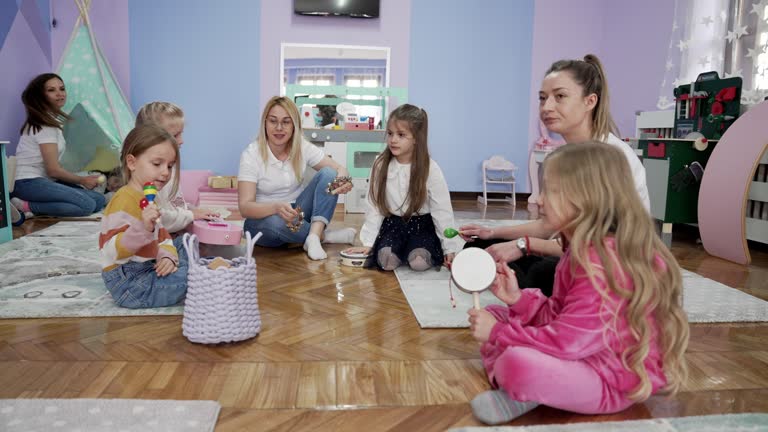Every child deserves to grow, learn, and feel understood—especially those facing developmental or behavioral challenges. One of the most effective, research-supported interventions for children with autism and related needs is Applied Behavior Analysis (ABA). When provided in a group setting with peers who share similar needs, the therapy becomes even more powerful. Learn how Group Therapy (Counseling & ABA) can support your child’s social and emotional growth. Start your child’s journey with expert-led group ABA sessions today.
What Is Group ABA Therapy?
Group ABA is a structured behavioral therapy where children with similar developmental or behavioral needs participate in sessions together. This approach uses core principles of ABA—such as positive reinforcement, modeling, and task analysis—in a group setting to build social, communication, and life skills.
In the USA, group ABA is increasingly recognized for its ability to help kids work through real-life scenarios like taking turns, expressing emotions, or making eye contact in a natural, supportive environment. Sessions are often led by Board Certified Behavior Analysts (BCBAs) and supported by trained therapists.
Benefits of Group ABA for Kids with Similar Needs
When children engage in therapy with peers who face similar challenges, they feel more accepted and less alone. The group format opens the door to dynamic learning experiences that go beyond individual sessions. Here are some major benefits:
- Real-World Social Interaction
Group ABA helps kids practice interacting with others in a safe, supervised setting. These interactions are tailored to their developmental level and provide immediate feedback, which helps reinforce appropriate social behavior.
- Peer Modeling
Children learn by watching others. In group ABA, kids can observe peers using the same strategies they’re learning, helping them imitate and master new skills faster.
- Better Communication Skills
Children with autism or communication difficulties benefit from practicing functional communication in a real-world group setting. It helps build confidence and reduces frustration.
- Shared Learning Goals
Grouping kids with similar needs ensures that activities and strategies are relevant and appropriately challenging. This maximizes progress while minimizing stress.
- Emotional Support and Motivation
Group settings create a sense of community and belonging. Kids often feel more motivated and less isolated when working toward common goals alongside others who understand their challenges.
Insights: Why Group ABA Works Better for Similar Needs
Children with similar developmental stages, learning speeds, or behavioral goals respond better when grouped together. This alignment allows therapists to design effective sessions that meet everyone’s needs without leaving anyone behind. It also allows more targeted reinforcement and data collection, helping measure progress effectively.
Pros and Cons of Group ABA for Kids with Similar Needs
Pros:
- Encourages natural communication
- Builds peer relationships
- Faster skill acquisition through modeling
- Reduces isolation and increases self-esteem
- Promotes teamwork and empathy
Cons:
- May not be suitable for severe behavior issues
- Requires careful matching of children’s skill levels
- Not a replacement for 1-on-1 therapy (but complements it)
Benefits of Group ABA for Kids with Similar Needs: A Real-World Example
Take a group of five children with mild-to-moderate autism, all learning to improve conversation skills. In group ABA, each child gets turns to speak, listen, ask questions, and respond—with guidance from a therapist. Over time, they learn to enjoy these exchanges and take those skills into their classrooms or home environments.
Advanced How-Tos: Getting Started with Group ABA
- Start with an Assessment: Your child’s unique needs should be evaluated by a licensed BCBA.
- Set Group Goals: Therapists match children with others who share similar therapy targets.
- Engage Consistently: Progress depends on regular participation, so aim for routine involvement.
- Reinforce at Home: Ask the therapist for ways to carry the learning into daily routines.
Specialized Tips for Parents
- Ask how your child’s group is structured—look for small ratios (1:3 or 1:4).
- Make sure therapists are board certified and experienced with your child’s needs.
- Attend progress meetings and ask for data on your child’s development.
Help & Support
For families looking for trusted Group Therapy (Counseling & ABA) programs, 24/7 DCT offers compassionate, evidence-based services tailored for children. Find your local provider or schedule a consultation today.
How It Works
- Schedule a Consultation
- Receive a Personalized Evaluation
- Join a Matched Group ABA Program
- Track Progress with Your Therapist
- Get Support Every Step of the Way
FAQs
Q1: What age groups benefit most from group ABA?
A: Group ABA is typically effective for children aged 3–12, but teens can also benefit when grouped appropriately.
Q2: Is group ABA therapy covered by insurance?
A: Yes, many U.S. insurance providers cover group ABA. Check with your provider for specifics.
Q3: Can group ABA replace individual therapy?
A: No, it works best alongside one-on-one ABA, offering different benefits in social and peer interaction.
Q4: How long does my child need to attend group ABA?
A: Duration depends on individual goals but usually ranges from 6 months to 2 years with ongoing assessments.
Q5: What’s the difference between regular group therapy and Group ABA?
A: Group ABA uses behavior-based, data-driven techniques specifically for children with developmental delays.
Final Thoughts
Choosing the right therapy can change your child’s life. By enrolling in Group Therapy (Counseling & ABA), your child gains not only essential social and emotional skills but also a sense of belonging. When tailored to kids with similar needs, group ABA becomes a life-changing experience for children and parents alike.
For holistic, compassionate care and child-focused therapy services, trust 24/7 DCT. Your child’s future starts here.
